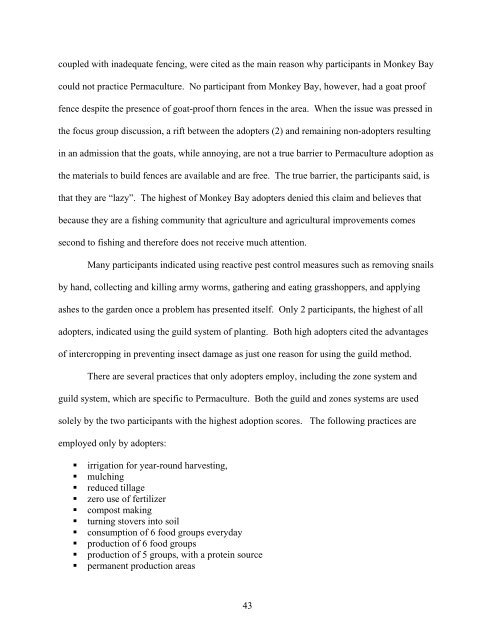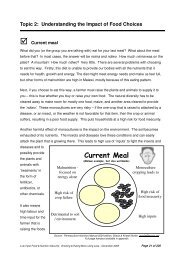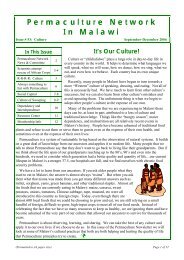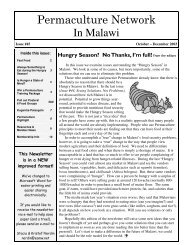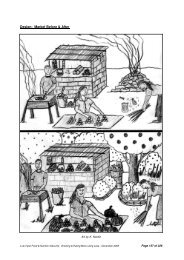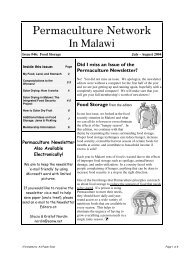Permaculture, Final Capstone Paper 5-26, Hope - Never Ending Food
Permaculture, Final Capstone Paper 5-26, Hope - Never Ending Food
Permaculture, Final Capstone Paper 5-26, Hope - Never Ending Food
You also want an ePaper? Increase the reach of your titles
YUMPU automatically turns print PDFs into web optimized ePapers that Google loves.
coupled with inadequate fencing, were cited as the main reason why participants in Monkey Bay<br />
could not practice <strong>Permaculture</strong>. No participant from Monkey Bay, however, had a goat proof<br />
fence despite the presence of goat-proof thorn fences in the area. When the issue was pressed in<br />
the focus group discussion, a rift between the adopters (2) and remaining non-adopters resulting<br />
in an admission that the goats, while annoying, are not a true barrier to <strong>Permaculture</strong> adoption as<br />
the materials to build fences are available and are free. The true barrier, the participants said, is<br />
that they are “lazy”. The highest of Monkey Bay adopters denied this claim and believes that<br />
because they are a fishing community that agriculture and agricultural improvements comes<br />
second to fishing and therefore does not receive much attention.<br />
Many participants indicated using reactive pest control measures such as removing snails<br />
by hand, collecting and killing army worms, gathering and eating grasshoppers, and applying<br />
ashes to the garden once a problem has presented itself. Only 2 participants, the highest of all<br />
adopters, indicated using the guild system of planting. Both high adopters cited the advantages<br />
of intercropping in preventing insect damage as just one reason for using the guild method.<br />
There are several practices that only adopters employ, including the zone system and<br />
guild system, which are specific to <strong>Permaculture</strong>. Both the guild and zones systems are used<br />
solely by the two participants with the highest adoption scores. The following practices are<br />
employed only by adopters:<br />
• irrigation for year-round harvesting,<br />
• mulching<br />
• reduced tillage<br />
• zero use of fertilizer<br />
• compost making<br />
• turning stovers into soil<br />
• consumption of 6 food groups everyday<br />
• production of 6 food groups<br />
• production of 5 groups, with a protein source<br />
• permanent production areas<br />
43


